As the workforce evolves, the office environment must evolve to accommodate the needs and preferences of the next generation. With the rise of millennials and Gen Z professionals, traditional office furniture and design concepts are no longer sufficient. Companies must recognise that their preferences and workstyles differ significantly from previous generations.
In addition to embracing technological advancements, organisations must adapt their physical spaces to suit the needs and preferences of this tech-savvy and socially conscious generation. Here, we’ll explore the key factors that shape the next generation of workers and how businesses can adapt office furniture to meet their needs effectively.
Embracing Flexibility and Versatility in Design for the Next Generation
The next generation of workers values flexibility and adaptability in their workspace more than ever before. Static, rigid workstations are becoming a thing of the past. Today’s employees seek a more fluid and adaptable workspace that enables them to work from different locations within the office or even remotely. Modular and adjustable office furniture solutions, such as sit-stand desks, ergonomic chairs, and movable partitions, are essential for supporting the dynamic nature of the modern workforce. By promoting movement and choice, businesses can not only enhance productivity but also increase employee satisfaction.
A great example of furniture designed for flexibility is the Y-Table. The Y-table encourages you to be curious about the space you’re in and creative in the way you use it. The table is light-weight, height adjustable and easy to manoeuvre. This allows users to explore various setups to create a workspace experience that is perfectly tailored to their needs.
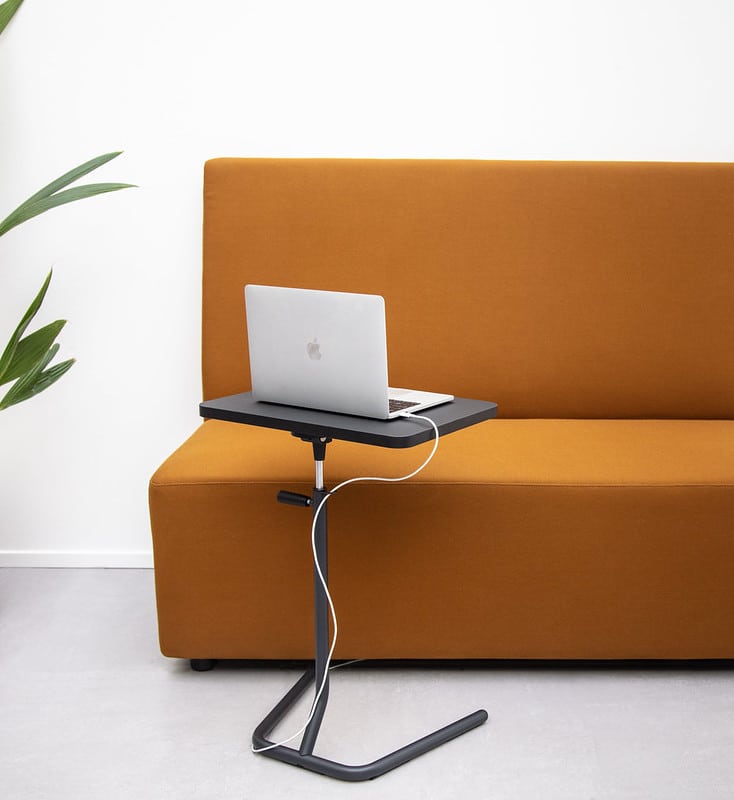
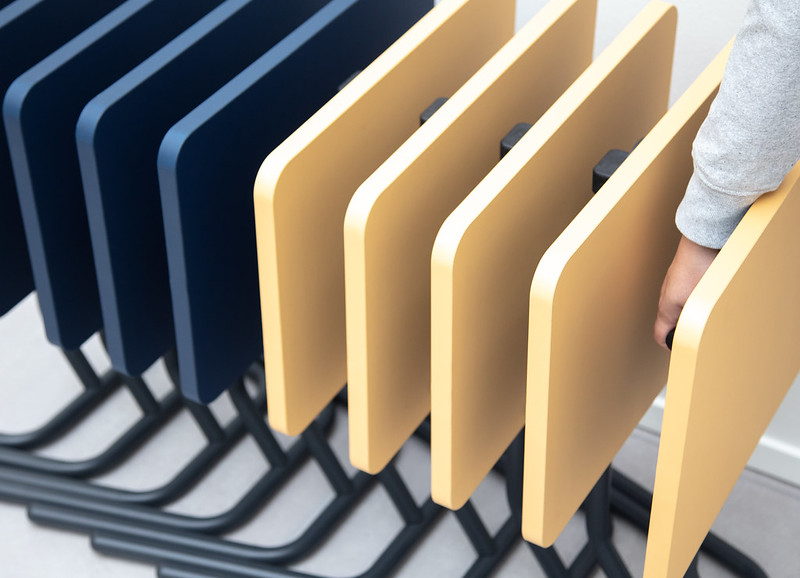
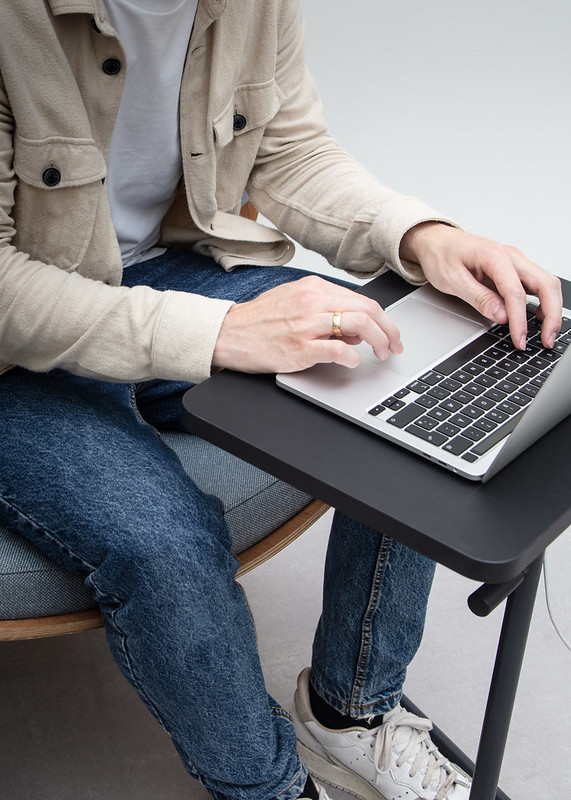
Ergonomics and Well-Being
The new generation is well aware of the potential health issues that can arise from prolonged hours of desk work. This is part of the reason they place a significant emphasis on well-being and work-life balance. Ergonomic office furniture is no longer a luxury but a necessity. Chairs that provide proper lumbar support, height-adjustable desks, and spaces designed for relaxation and meditation are crucial components of the well-being-focused office environment. These elements can contribute to reduced absenteeism, increased employee morale, and improved overall productivity.
Furthermore, integrating elements of biophilic design, such as indoor plants or natural lighting, can improve well-being and productivity. Prioritising wellness initiatives and incorporating ergonomic furniture shows employees that their health and happiness are valued by their employers.
A great ergonomic chair at Ocee & Four Design is our Re-act Deluxe chair. It provides excellent support through its fully upholstered cut foam back and moulded foam, height-adjustable seat. Furthermore, the ratchet back and tension control features ensure complete adjustability, allowing employees to personalise their sitting experiences.
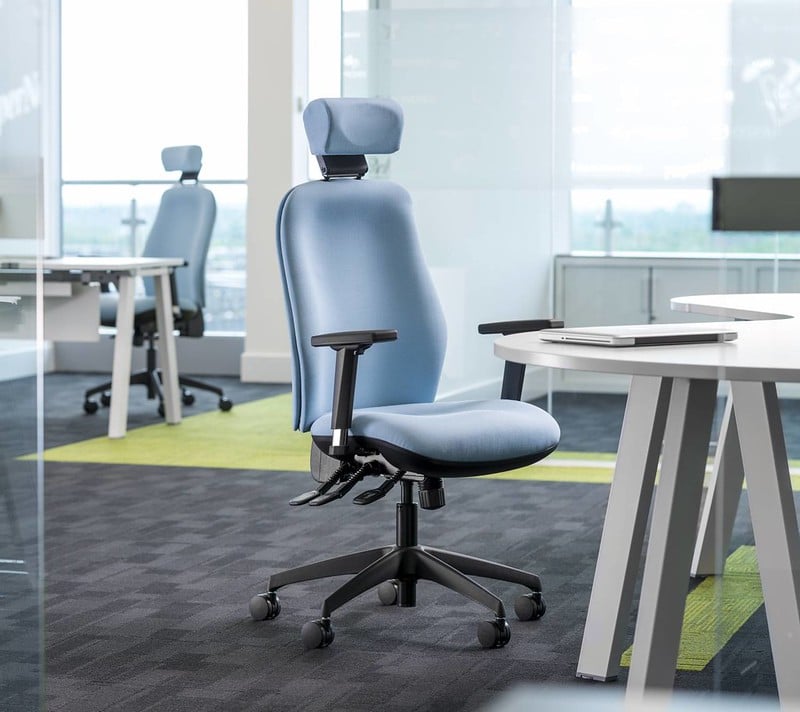
Integrating Technology Seamlessly
Given their relationship with technology, the new generation expects their work environment to be equipped with the latest tech solutions. Office furniture should seamlessly integrate technology to support the use of laptops, tablets, smartphones, and other devices.
Wireless charging stations, integrated power outlets and cable management systems are excellent additions that make the work environment more efficient and appealing to tech-oriented employees.
The FourUs Booth is a great example of how you can seamlessly integrate technology into your office furniture design. Depending on your requirements, the booth can be adapted to fit screens, electrical sockets, cable management systems etc.
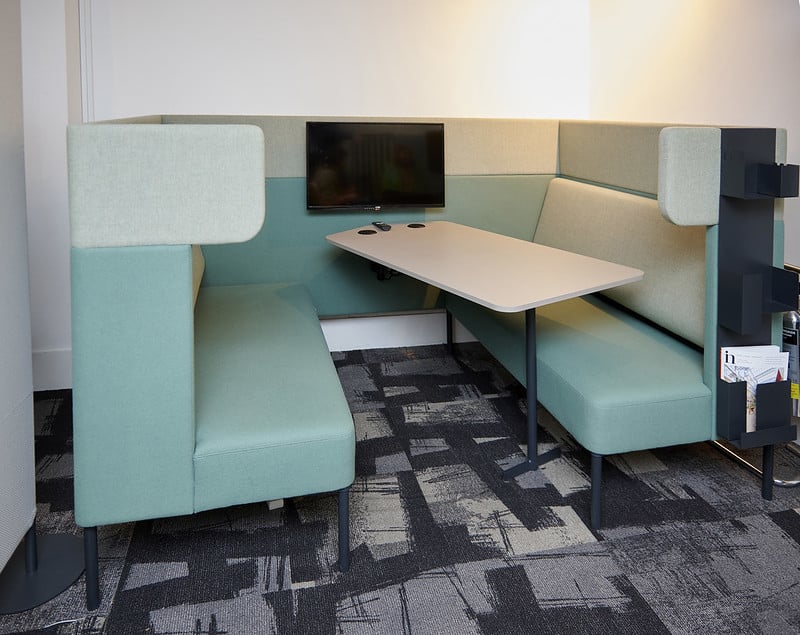
Encouraging Collaboration and Creativity with Design for the Next Generation
Collaboration and creativity are at the heart of innovative businesses. Traditional cubicles and closed-off offices inhibit communication and hinder creativity. Instead, offices can benefit from fostering a collaborative culture with open-plan workstations, communal areas, and interactive furniture setups that encourage impromptu discussions and idea-sharing.
Implementing huddle rooms, creative brainstorming spaces, and communal lounges with comfortable seating fosters a sense of community and collaboration. Furthermore, incorporating writable surfaces, like whiteboards or writable glass walls, can ignite creativity and make brainstorming sessions more engaging.
These spaces support productivity but also enhance the social aspect of work that the new wave of workers highly value.
Sustainability and Social Responsibility
The new generation of workers tends to be concerned about environmental issues and sustainable practices. Companies that demonstrate a commitment to eco-friendly initiatives are more likely to attract and retain top talent. Sustainable office furniture made from recycled materials and designed for easy disassembly and recycling at the end of its lifecycle is an excellent way to align the workplace with the values of environmentally conscious employees.
Additionally, promoting education and awareness about sustainability within the workplace can foster a culture of responsibility and mindfulness towards environmental issues. Companies can also engage in community-based initiatives, such as organising or sponsoring local environmental clean-up events, tree planting drives, or supporting renewable energy projects.
At Ocee & Four Design we’re committed to sustainability and whilst we don’t claim to be perfect, we are pretty proud of our progress. Find out more about what we’re doing around sustainability here: Sustainability – Ocee & Four Design (oceefour.com).
Office design for the next generation
Designing office spaces that cater to the next generation of workers is not just a trend. It is a necessity for businesses that wish to remain competitive in a rapidly changing world. Embracing flexibility, prioritising comfort and well-being, integrating technology seamlessly, encouraging collaboration and creativity, and embracing sustainable practices are all essential aspects of modern office furniture design.
By understanding the upcoming workforce, businesses can create workplaces that inspire innovation, foster productivity, and nurture a positive company culture. Ultimately, investing in adaptable and employee-centric office furniture is an investment in the future success of the organisation.


